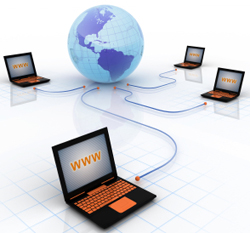Streaming media gives you the ability to create your own “radio and television” network with live programming and provide Video On Demand (VOD). Streaming media in conjunction with the web gives any person or organization the ability to produce and deliver media content to a worldwide audience.
Creative teams can produce drama, comedies, documentaries, and educational material on a level with those of traditional media concerns.
This is all possible due to the advances in digital technology from the camera clear through to distribution. And, the ability to be able to produce and deliver a high quality message just gets better with each generation of hardware and software.
Streaming media and networking technologies have leveled the field for those who want to produce quality programming. Broadcast networks, magazines, and other traditional media are looking to the Internet as an alternative outlet, because it can be an economical way to have worldwide distribution.
Microsoft, Apple, and even phone companies are trying to get their gear to be the device for consuming media and entertainment. This makes the future even better for non-traditional media companies to compete globally with quality media and entertainment.
The trend from traditional concerns recently started with ABC as one of the first networks to introduce full episodes of their shows to be available on the web for viewing immediately after the episode aired. This is a type of streaming media called Video On Demand (VOD).
This same technology is available to everyone. It does require additional development using web technologies such as Flash, JavaScript, AJAX, and web services and other technologies to produce interactivity on the web.
Streaming vs. Downloading
There are two popular ways of consuming media on the Internet; streaming and progressive download. At first both of these technologies may look the same because you get a media player and you hit the play button and video starts playing.
However, there is a key difference between the two technologies. The main difference is that the progressive download is transferring the file to your hard drive.
When you hit the play button using progressive downloads the file starts the download and as soon as enough of the file is transferred it starts to play the video. This method downloads and leaves a copy of the video on your computer and it plays the video from the hard drive.
Steaming technology requires that the media plays directly from a media server at some other location, so you have to be connected to a network to view the media. Streaming media can be live video distributed over the web or can be prerecorded and served as VOD.
If the program is pre-produced, you can start the stream, and as the producer of this content you can define what controls will be provided. The controls in this case would include pause, stop, start, and rewind that are displayed on the player. However, if the video is live you typically don’t have controls to rewind or fast-forward the video.
The Production Process
While the steps are the same, the production process is a bit different if you plan on streaming live vs. delivering a pre-produced program. The steps in both cases are shoot, produce, package, and deliver. The key difference is in the “produce” step.















